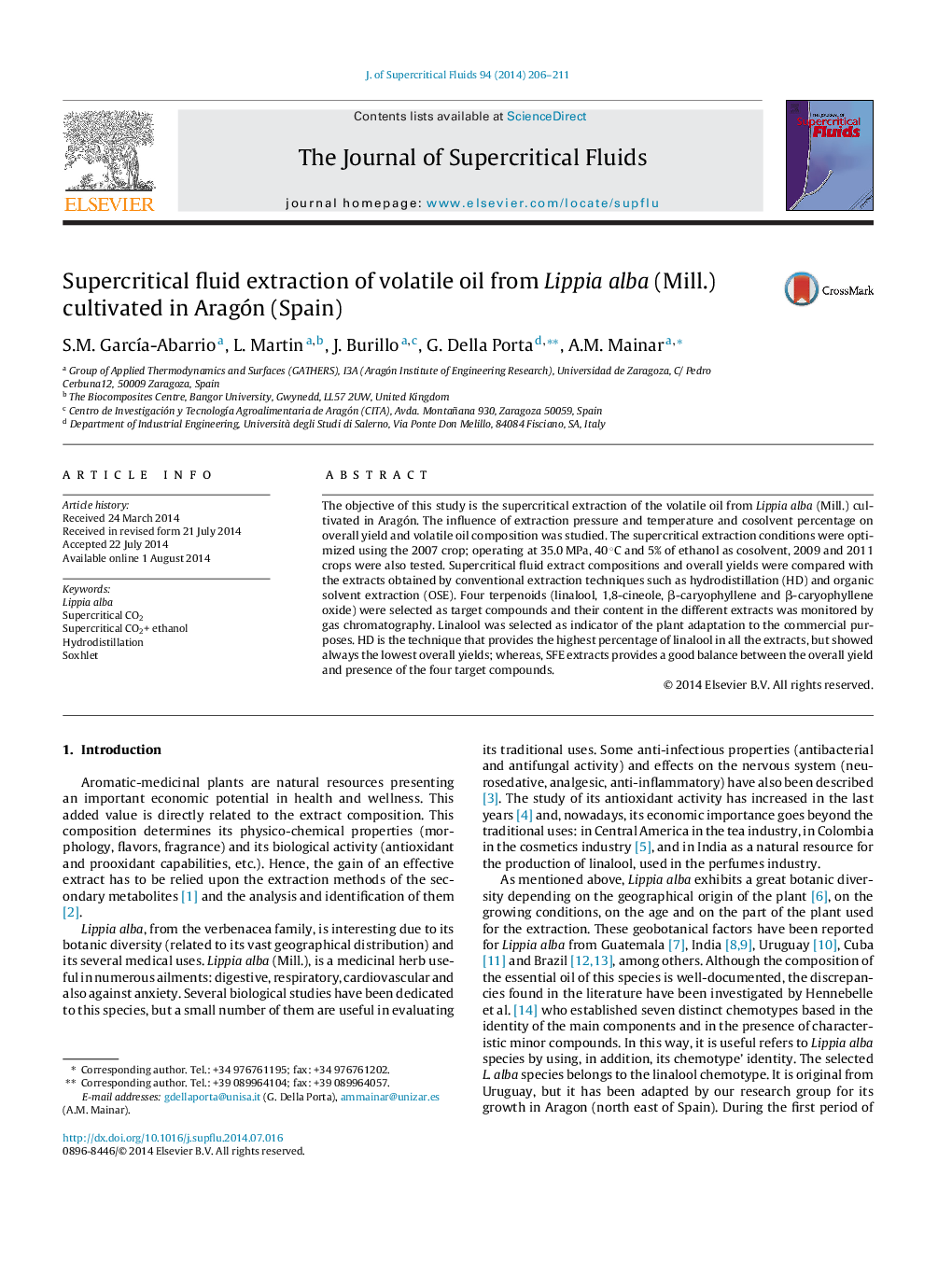| Article ID | Journal | Published Year | Pages | File Type |
|---|---|---|---|---|
| 230393 | The Journal of Supercritical Fluids | 2014 | 6 Pages |
•Supercritical extraction of the oil from different crops of Lippia alba (Mill.).•SFE results were compared with conventional techniques (HD and OSE).•Four terpenoids were screened: linalool, 1,8-cineole, β-caryophyllene and β-caryophyllene oxide.•The best SFE conditions using EtOH as entrainer were 35.0 MPa, 40 °C and 5% EtOH.•The growth and development conditions of the plant still have to be optimized.
The objective of this study is the supercritical extraction of the volatile oil from Lippia alba (Mill.) cultivated in Aragón. The influence of extraction pressure and temperature and cosolvent percentage on overall yield and volatile oil composition was studied. The supercritical extraction conditions were optimized using the 2007 crop; operating at 35.0 MPa, 40 °C and 5% of ethanol as cosolvent, 2009 and 2011 crops were also tested. Supercritical fluid extract compositions and overall yields were compared with the extracts obtained by conventional extraction techniques such as hydrodistillation (HD) and organic solvent extraction (OSE). Four terpenoids (linalool, 1,8-cineole, β-caryophyllene and β-caryophyllene oxide) were selected as target compounds and their content in the different extracts was monitored by gas chromatography. Linalool was selected as indicator of the plant adaptation to the commercial purposes. HD is the technique that provides the highest percentage of linalool in all the extracts, but showed always the lowest overall yields; whereas, SFE extracts provides a good balance between the overall yield and presence of the four target compounds.
Graphical abstractFigure optionsDownload full-size imageDownload as PowerPoint slide
